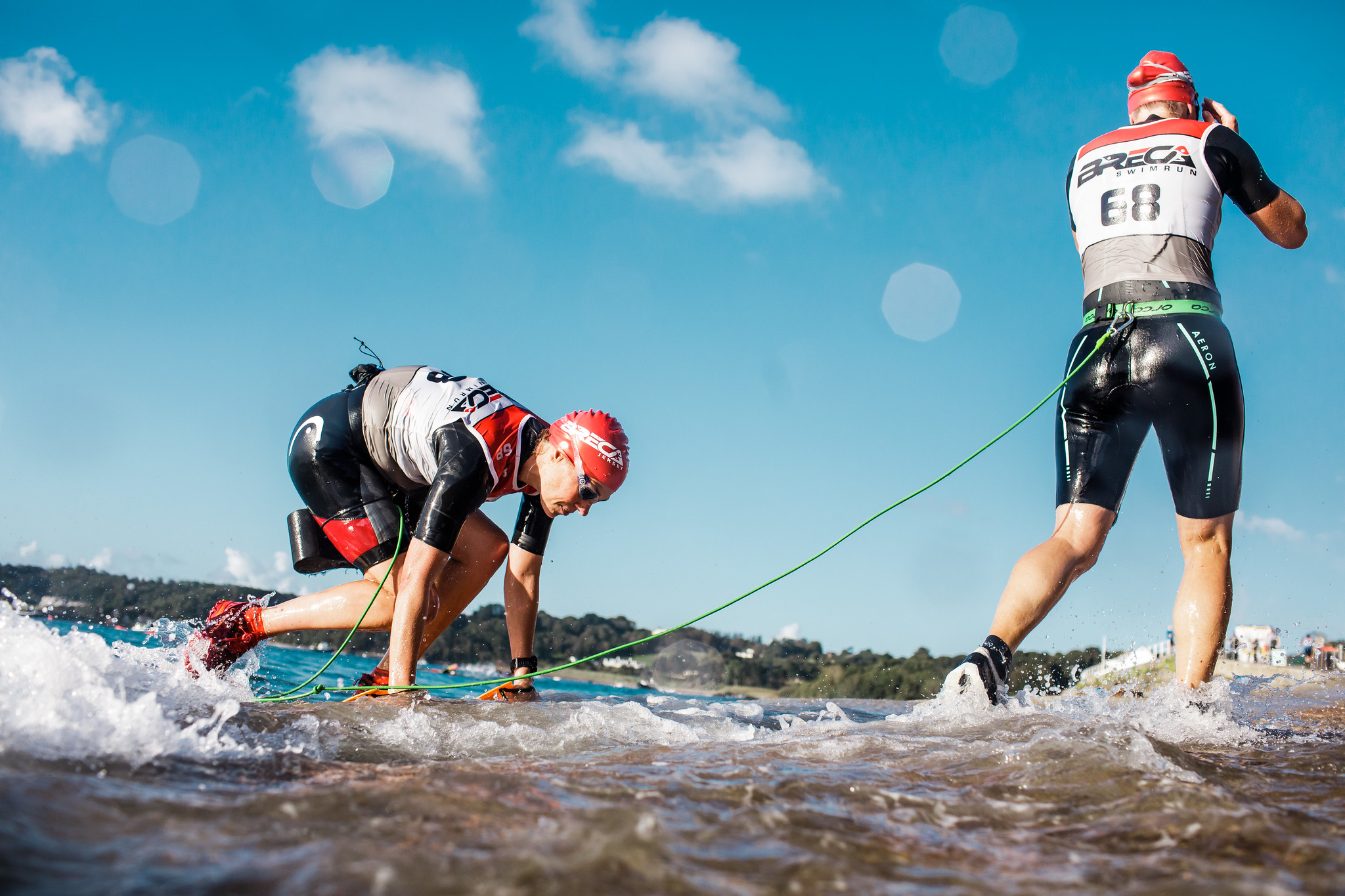In swimrun, how much does towing your race partner slow you down?
Plus some more testing with pull buoys
I recently did some testing on the benefits of using paddles and a pull buoy while swimming with shoes, swimrun style. You can see the findings here.
However, this test was done without a wetsuit as the water was too warm. This does happen sometimes in swimrun events, but rarely. The more usual scenario is that a wetsuit is compulsory. I therefore tested using a pull buoy again, this time with a wetsuit. I also asked a friend to try, as I suspect the results vary by individual. We then tested swimming with a tow line. Here are the results. The times are for a 400m loop in calm open water at 22.5 degrees.
|
Scenario |
Swimmer 1 |
Swimmer 2 |
|
Wetsuit, shoes, pull buoy |
6:59.5 |
7:43.0 |
|
Wetsuit and shoes only |
6:59.6 |
8:15.1 |
|
|
Joint time |
|
|
Tow line, no pull buoys |
7:22.7 |
|
|
Tow line, with pull buoys |
7:03.3 |
|
The two things that jump out here are (1) Swimmer 2 gets a lot more benefit from the pull buoy than Swimmer 1 and (2) A team can save a lot of time by using a leash or tow line.
This raises a couple of questions. Firstly, why should some swimmers benefit a lot more than others from using a tow float and, secondly, how can the leash make such a massive difference to the speed of the following swimmer while barely impacting that of the lead swimmer?
The usual explanation for the speed boost from a pull buoy is that it improves body position by lifting the legs and therefore makes you more streamlined. However, a wetsuit will already give you some lift. It’s possible, such as with Swimmer 1 above, that the extra lift from a pull buoy makes no difference. The gains have already been made due to the wetsuit.
Another explanation may be relevant for swimmers that already have good body position. Wearing shoes not only increases drag, it stops you using your feet. If you normally generate a significant amount of propulsion with your legs, wearing shoes may have a larger than average impact on your swim speed. The pull buoy, because it effectively stops you kicking, saves you energy and allows you to work harder with your upper body and swim faster. Possibly.
Swimming with a leash is interesting. An initial assumption might be that the lead swimmer tows the following swimmer. But if this was the case, surely the combined speed would be significantly slower than the lead swimmer can do alone? We see from the results above that this was not the case. The combined speed was almost identical to what Swimmer 1 did alone. What if, rather than providing a tow, the leash allows the following swimmer to swim more efficiently? Using the leash takes away the need to sight regularly so should encourage better head and therefore body position. It also enables the second swimmer to stay in a good drafting position. Combining these two could allow the following swimmer to maximise their speed through the water, with little impact on the speed of the lead swimmer. Interestingly, the lead swimmer felt little to no drag while the following swimmer reported a shift in focus from worrying about sighting to concentrating on swimming strong and following the tow line – a race partner with a proper job to do rather than a liability to be dragged through the water.
Ultimately, it doesn’t matter what causes the differences in speed. The key point is that alternative combinations of kit can result in big differences in speed. These might not be obvious until you measure them. The results we found here may be unique to us. Being able to choose what kit you use is one of the many fun things about swimrun. It’s well worth testing to see what works for you.
Image (c) Breca Swimrun
